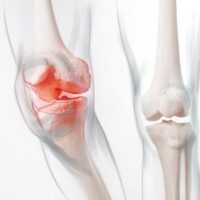Using Medical Illustrations and Animations at Trial: Presenting Injury Evidence to Florida Juries

When someone suffers a serious injury in Florida, the path to recovery is often long and overwhelming. Medical terms, complex diagnoses, and treatment plans can be confusing even for the injured person, let alone a jury tasked with evaluating evidence in a courtroom. In personal injury trials, clarity matters. One of the most effective ways attorneys can help jurors understand what happened to an injured client is through medical illustrations and animations.
Medical visuals transform complicated health records and testimony into powerful evidence that shows, rather than tells, the impact of an accident. Whether a case involves a traumatic brain injury, spinal cord damage, or complicated surgery, these illustrations allow jurors to see what words alone often cannot capture.
Why Visuals Make Such a Difference
Jurors come from diverse backgrounds, and few have medical training. Without visuals, they may struggle to picture how a torn ligament looks, or to understand why nerve damage results in lifelong pain. Florida courts allow attorneys to introduce demonstrative evidence, such as medical illustrations and animations, as long as they accurately reflect the facts of the case.
Research shows that people retain information better when it is presented visually. By using illustrations of the injured body part or animations of a surgical procedure, attorneys bridge the gap between expert testimony and juror understanding. These tools not only educate, but also make the human toll of an accident more real to those deciding damages.
Types of Medical Illustrations and Animations
Injury cases may involve a wide range of visual aids:
- Anatomical illustrations: Detailed drawings that show the affected body part and injury location.
- Diagnostic imaging enhancement: Simplified versions of MRIs or CT scans that highlight the damaged areas.
- Surgical procedure animations: Step-by-step videos showing how an injury was treated or how medical devices were implanted.
- Progression timelines: Visuals showing how an injury worsens over time or how healing will require future procedures.
These visuals are particularly persuasive in cases where soft tissue injuries or internal trauma are difficult to demonstrate with photographs alone.
Legal Considerations Under Florida Law
Medical visuals cannot simply be shown to a jury without legal safeguards. Under Florida Statute § 90.901, demonstrative evidence such as an illustration or animation must first be authenticated by a qualified witness, usually the treating physician or medical expert, to confirm that it fairly and accurately depicts the injury. This requirement ensures that jurors are not misled by visuals that exaggerate or distort the facts.
Additionally, Florida Statute § 90.403 gives courts the power to exclude demonstrative evidence if its potential to cause unfair prejudice or confusion substantially outweighs its usefulness. This means that while a powerful animation might help explain a surgery, it cannot be admitted if the court believes it might overwhelm jurors emotionally rather than help them focus on the facts.
When presented correctly under these rules, medical illustrations and animations meet Florida’s evidentiary standards, providing clear and trustworthy guidance for jurors.
Humanizing the Injury for the Jury
Numbers on a medical bill or descriptions of pain cannot fully capture what it means to live with a permanent injury. Illustrations showing the placement of spinal hardware, or animations of a fractured bone repair, help jurors empathize with what an injured person has endured. For those suffering chronic pain, these visuals validate the invisible nature of their suffering by showing exactly what is happening inside their body.
For instance, a person with a herniated disc may appear outwardly healthy when they walk into a courtroom. Yet an animation of how that disc presses against nerves can powerfully convey why they live with daily pain. Visuals allow the jury to connect medical facts with the lived reality of the plaintiff.
Building Stronger Cases with the Right Team
To create compelling medical illustrations, attorneys often collaborate with medical experts and professional illustrators who specialize in legal exhibits. These professionals ensure accuracy while making the visuals clear and digestible for a lay audience. The investment in these exhibits can significantly strengthen a case, especially when large damages are at stake.
At Smith, Ball, Báez & Prather, our trial teams understand how critical it is to present medical evidence in ways that resonate with juries. By working closely with medical experts, we ensure that every illustration or animation presented is not only scientifically accurate but also persuasive.
The Impact on Compensation Awards
Jurors who clearly understand the extent of an injury are more likely to award fair compensation. Medical visuals often tip the scales when damages involve long-term care, loss of earning capacity, or reduced quality of life. In cases of catastrophic injury, where future medical costs can reach millions of dollars, the ability to present these realities visually can mean the difference between an inadequate settlement and the full compensation an injured person deserves.
Contact Smith, Ball, Báez & Prather
If you or a loved one has been seriously injured in an accident, you need attorneys who understand not only the law but also how to present your injuries in the clearest, most persuasive way possible.
At Smith, Ball, Báez & Prather, our experienced team of West Palm Beach personal injury attorneys works tirelessly to ensure juries see the full impact of your injury. We combine compassion with trial-tested strategies, including the use of medical illustrations and animations, to help you pursue the justice and compensation you deserve. Contact us today for a free consultation.
Sources:
Florida Statute § 90.901 – Requirement of Authentication or Identification
Florida Statute § 90.403 – Exclusion on Grounds of Prejudice or Confusion
Florida Bar Journal – A Practitioner’s Look at Demonstrative Evidence
